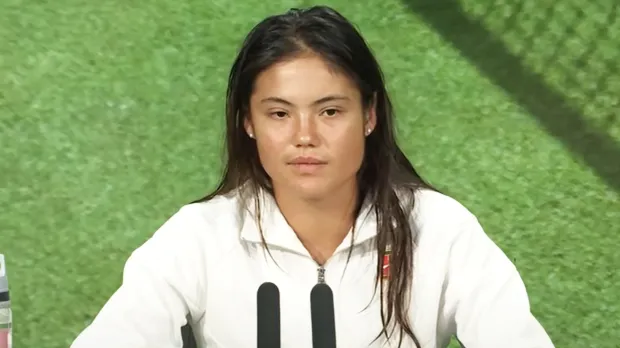
The pristine courts of Wimbledon, where tradition meets precision, have been shaken by a storm of controversy during the 2025 Championships. British tennis stars Emma Raducanu and Jack Draper, both celebrated for their meteoric rise in the sport, have found themselves at the center of a heated debate over the reliability of the Hawk-Eye ball-tracking system. Their outspoken criticism of the technology, which has long been a cornerstone of modern tennis officiating, has drawn sharp rebuke from a prominent figure in the tennis world, who dismissed their complaints as “utter garbage.”
Raducanu, the 22-year-old former US Open champion, and Draper, Britain’s rising star, voiced concerns about Hawk-Eye’s accuracy after pivotal moments in their respective matches. Raducanu, speaking after her third-round defeat to Aryna Sabalenka, expressed frustration with the system’s performance. “It’s kind of disappointing, the tournament here, that the calls can be so wrong,” she remarked, reflecting on a series of disputed calls that she believed marred her matches. “I’ve had a few in my other matches, too, that have been very wrong.” Her comments echoed a growing sentiment among some players that the technology, designed to eliminate human error, might not be as infallible as once thought.
Draper, similarly, raised eyebrows when he questioned Hawk-Eye’s reliability during his own campaign at Wimbledon. His concerns centered on critical line calls that he felt swayed the momentum of his matches. The young Brit’s frustration was palpable, as he argued that the system’s errors were costing players crucial points in high-stakes moments. For a tournament as prestigious as Wimbledon, where every point is scrutinized under the weight of history, such criticisms carry significant weight.
However, their remarks did not go unchallenged. Tim Henman, a former Wimbledon semi-finalist and current All England Club board member, delivered a stinging rebuttal. Speaking in his role as a BBC pundit, the 50-year-old tennis icon reviewed slow-motion replays of the disputed calls and found no fault with Hawk-Eye’s judgments. “The narrative around players questioning the accuracy of the calling – that, to me, is just utter garbage,” Henman declared, his words cutting through the controversy with the authority of a seasoned veteran. His defense of the technology underscored its long-standing reputation for precision, backed by years of data and testing.
The controversy deepened with an incident involving another British player, Sonay Kartal, whose fourth-round loss to Anastasia Pavlyuchenkova was overshadowed by a Hawk-Eye miscue. During the first set, a point was disrupted when the system incorrectly called a shot, later attributed to “human error” by Wimbledon officials. The mistake forced the referee to replay the point, despite clear evidence that Kartal’s backhand was out. Wimbledon issued an apology for the error, acknowledging the rare lapse in a system that has become synonymous with fairness in tennis.
This series of events has sparked a broader conversation about the role of technology in sport. Hawk-Eye, introduced to tennis in 2006, has revolutionized officiating by providing players with the ability to challenge calls with near-instantaneous replays. Its adoption across major tournaments has reduced disputes and enhanced the game’s integrity. Yet, as Raducanu and Draper’s criticisms highlight, even the most advanced systems are not immune to scrutiny. The incident with Kartal, in particular, has fueled calls for greater transparency in how Hawk-Eye is implemented and monitored during matches.
For Raducanu and Draper, the controversy comes at a critical juncture in their careers. Raducanu, who burst onto the global stage with her 2021 US Open triumph, has been navigating the pressures of expectation while striving to reclaim her form. Draper, meanwhile, is seen as a beacon of hope for British tennis, with his powerful game and relentless work ethic. Their willingness to speak out reflects a boldness that has defined their rise, but it also places them in the crosshairs of critics like Henman, who view their complaints as undermining the game’s established systems.
As Wimbledon 2025 progresses, the Hawk-Eye saga serves as a reminder of the delicate balance between tradition and innovation in tennis. While the All England Club has stood by the technology, the voices of players like Raducanu and Draper ensure that the conversation remains open. Whether their criticisms will lead to changes in how Hawk-Eye is used or perceived remains to be seen, but one thing is clear: in the cauldron of Wimbledon, every call counts, and every voice matters.
The Championships continue to captivate audiences, with coverage available across BBC Sport platforms, including TV, radio, BBC iPlayer, BBC Sounds, and the BBC Sport website and app. For now, the focus returns to the courts, where players battle not only their opponents but also the weight of expectation—and, occasionally, the technology that governs their game.
Leave a Reply